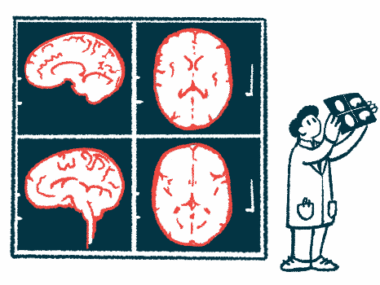Pituitary tumor surgery found safe, effective in elderly patients
Study finds low rate of surgical complications in patients 75 and older
Written by |

Surgery to remove a tumor in the brain’s pituitary gland is effective in patients 75 years or older, including those with Cushing’s disease, and is associated with a low rate of complications, according to a study in France.
The surgery was generally performed using a minimally invasive procedure and led to a high rate of remission in benign, hormone-secreting pituitary tumors, including three of the four patients with Cushing’s disease included in the study.
The study, “Pituitary surgery outcome in patients 75 years and older: a retrospective study,” was published in the journal Acta Neurichirurgica.
Rising proportion of elderly patients with pituitary disease
“As the general population ages and life expectancy increases, the proportion of elderly patients [those 65 years and older] with pituitary [disease] is rising,” the researchers wrote, adding that pituitary adenomas can affect 15% of the elderly population.
Pituitary adenomas are benign, hormone-producing tumors. Some of these adenomas release too much adrenocorticotropic hormone that triggers excessive cortisol production by the adrenal glands located atop the kidneys, ultimately causing Cushing’s disease.
In most surgeries, complications are more common among elderly patients, but several studies have indicated that complications associated with pituitary surgery are not significantly increased in patients older than 65.
“However, few large monocentric series including more than 100 patients have reported postoperative [post-surgery] outcomes of a specific population aged 75 years or older,” the researchers wrote.
“Beyond 75 years, optimal individual management is crucial, with a patient-tailored strategy aimed to reach the best compromise between tumor resection and preservation of [hormonal] functions,” they added.
In the new study, a team of scientists in France evaluated the clinical features, surgery strategy, and surgical complications and outcome in 155 patients, 75 or older, who underwent surgery to remove pituitary tumors between January 2008 and June 2022.
Patients were a median 78 years of age and more than half were men (53%). Most patients (79%) had vision problems, which is a common symptom of pituitary tumors. A total of 10 patients (6%) had undergone previous surgery.
Excessive hormone levels were detected in 14 patients (9%), four of whom had Cushing’s disease.
An MRI scan before surgery identified pituitary adenomas in most patients (97%), while Rathke’s cleft cysts — benign, fluid-filled growths between parts of the pituitary gland — were present in 3% of the patients.
Patients were followed for a mean of 18.9 months, or 1.5 years.
Pituitary surgery is effective in the geriatric population, provided that patients have been highly selected before surgery.
Most patients underwent minimally invasive procedure through nose cavities
For most patients (96%), the first surgery was performed using the endoscopic endonasal transsellar approach, a minimally invasive procedure to remove pituitary tumors through the nose cavities.
Examination of the tumor tissue revealed silent corticotroph adenomas in seven patients (5%). These pituitary adenomas that do not produce excessive ACTH levels and do not lead to Cushing’s symptoms.
A single surgery was sufficient to reach the maximum tumor volume reduction in 98% of the cases, and was estimated to provide disease control for 97.3% of patients at two years and 86.2% at five years.
More than 80% of the tumor was removed with the first surgery in more than three-quarters of the patients (77%), with 34 patients (22%) having all of their tumor removed. Patients with a large tumor required a second surgery.
Among those with hormone-secreting tumors, three of the four patients (75%) with Cushing’s disease achieved disease remission. The remaining patient, who had an invasive larger tumor, achieved normalization of cortisol levels in the urine.
In addition, vision symptoms were reduced in two-thirds (67%) of the patients after surgery, and stabilized in the remaining cases. There were no reports of visual worsening.
Moreover, immediate surgical complications were reported in eight patients (5%). These included leakage of the fluid that surrounds the brain and the spinal cord (three patients), nose bleeding (two patients), inflammation of the membranes around the brain and spinal cord due to infection (one patient), and hematoma (one patient).
One patient died eight days after surgery due to a blood clot in the vessels that send blood to the lungs.
Statistical analyses accounting for several factors simultaneously showed that an extended endonasal approach, performed in three patients, was a predictor of surgical complications.
Finally, new hormonal deficits occurred in 5% of the patients with normal function before the surgery.
Rate of complications in elderly patients comparable to younger adult patients
The rate of complications in these elderly patients was comparable to that of a control population of younger adult patients treated with endoscopic pituitary surgery.
“In conclusion, with a high rate of [hormonal] remission in secreting adenomas and a high rate of tumor volume control, this study demonstrates that pituitary surgery is effective in the geriatric population [aged 75 years or older], provided that patients have been highly selected before surgery,” the researchers wrote.
The general use of a minimally invasive procedure has a low rate of surgical complications, “similar to the one observed in the general population of adult patients with adenomas,” they added.







